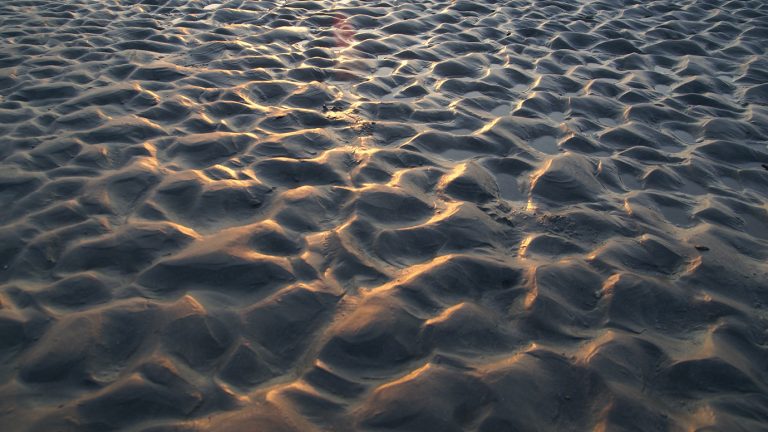If you mix cornstarch and water in the right proportions, you'll get “oobleck”: something that doesn't look quite liquid but also isn't quite solid. Oobleck flows and settles like a liquid when no one touches it, but solidifies when you try to pick it up or stir it with a spoon. The properties of oobleck and other non-Newtonian fluids — including silly putty, quicksand, paint, and yogurt — change under stress or pressure, and scientists have long struggled to prove exactly why.
Now, researchers at the University of Chicago's Pritzker School of Molecular Engineering have used piezoelectric nanoparticles, which themselves change in response to pressure, to study the fundamental physics of non-Newtonian fluids. The team discovered a key role for intermolecular friction in causing materials to transform from a liquid to a more solid structure.
“Not only does this answer long-standing fundamental questions about the physical origins of these materials, it also opens the doors to the design of new non-Newtonian fluids with practical applications,” says Stuart Rowan, the Barry L. McLean Professor of Molecular Engineering and Molecular Engineering. Co-senior author of the paper published in Proceedings of the National Academy of Sciences.
Among these potential applications: paint that doesn't clump, liquids that solidify in a mold when shaken, and wearable protective equipment that solidifies on impact.
Piezoelectric sensors
A distinctive feature of non-Newtonian fluids is that their viscosity—that is, how thick they are—changes dramatically when the material is under pressure. For some materials, this means thinning due to pressure. Shaking the ketchup bottle can make the condiment significantly more pourable; Yogurt, mayonnaise, and toothpaste maintain their shape in the container but become more liquid upon use.
But other materials like oobleck, which is a concentrated particle suspension, behave just the opposite: they can feel solid as you manipulate them but collapse into a puddle when you set them down.
Scientists have formulated hypotheses about why suspensions of concentrated particles change when they are sheared, that is, exposed to multiple forces acting in different directions. These hypotheses mostly relate to how the molecules and particles that make up materials interact with each other in different ways under different conditions, but each hypothesis is difficult to prove.
“To understand these concentrated suspended particles, we want to be able to look at the nanostructure, but the particles are so crowded together that imaging these structures is very difficult,” explained postdoctoral researcher Hoojin Kim, first author of the new research. .
To overcome this challenge, Kim collaborated with Ruan, Aaron Esser-Kahn, also a Pritzker School Professor of Molecular Engineering and an expert in piezochemistry, and Heinrich Geiger, the Sewell Avery Distinguished Professor of Physics. The team developed a technique that measures the change in electrical conductivity based on the shear force applied to it. Next, they suspended the nanoparticles in a liquid at such a concentration that they exhibited non-Newtonian properties in the same way as the oobleck.
The researchers applied shear force to the top and bottom of the fluid and simultaneously measured the resulting changes in both viscosity and electrical signals. This allowed them to determine how molecules interact as they transform from a more fluid substance to a more solid substance.
“We found that friction between molecules was crucial to this transformation,” Kim said. “In this concentrated particle solution, there is a tipping point when friction reaches a certain level and the viscosity suddenly increases.”
A set of applications
Understanding the physical forces acting in a solution of concentrated particles is one step toward being able to design new non-Newtonian fluids in the laboratory. One day, these engineering materials could have customized properties that allow scientists to control their viscosity through pressure. In some cases, this can reduce caking and clogging of liquids such as paint and concrete. In other cases, it may mean intentional hardening of materials if desired.
“For any application, we hope that we will eventually be able to identify the ideal combination of solvents, particles, and shear conditions to get the properties we want,” Kim said. “This paper may seem like very basic research, but in reality, non-Newtonian fluids exist everywhere, so this has a lot of applications.”
Currently, researchers at Pritzker Molecular Engineering and the University of Chicago plan to take advantage of the stress-induced piezoelectric activity of their nanoparticle suspensions to design new adaptable and responsive materials that, for example, become stiffer under mechanical force.
the quote: “Strain-activated friction in sheared suspensions tested using piezoelectric nanoparticlesKim et al., With peopleNovember 28, 2023.
Funding: University of Chicago Materials Research Science and Engineering Center (MRSEC) funded by the National Science Foundation, Army Research Laboratory
– Quoted from an article first Published by the Pritzker School of Molecular Engineering.

